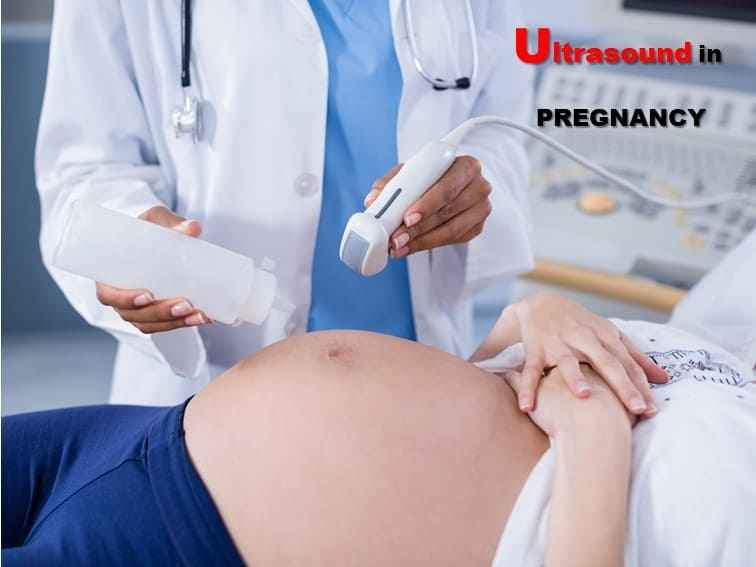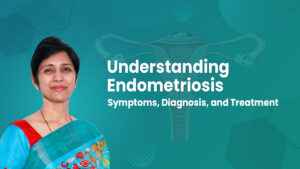Pregnancy Ultrasound Hyderabad | Dr. Rajeshwari Reddy
Ultrasound (sonography or a sonogram) is the use of sound waves to get images (an imaging technique that uses high-frequency sound waves) of the growing baby (fetus) in the uterus of a pregnant woman.
Does the baby feel the sound waves?
Studies say no.
Is there any harmful effect of ultrasound?
No, there is no harm at all to the mother as well as to the baby.
What is the purpose of ultrasound in a pregnant woman?
The Purpose of ultrasound in a pregnant woman:
- To determine the location of the pregnancy.
- To evaluate the baby’s growth and development.
- To calculate the amount of liquor around the baby.
- To identify the position of the placenta.
How is it done?
There are two types: 1. transvaginal ultrasound 2. Abdominal ultrasound
Transvaginal ultrasound is done through (inside) the vagina.
In an abdominal ultrasound, the transducer is pressed gently against the stomach area moving it back and forth.
In the early pregnancy up to 6 to 7 weeks, obstetricians prefer transvaginal ultrasound. With this type, the visibility is good and the accuracy (correctness)of the report is very high. Transvaginal ultrasound is used more often during early pregnancy. It helps in knowing the number of babies, the position of the baby, and their heartbeat.
Pregnancy ultrasound 12th-week scan
Obstetricians recommend this NT (nuchal translucency) scan. This scan is helpful in detecting congenital birth defects in the growing baby. Neural tube defects can be detected in this scan.
The third scan is recommended during the 18-to-22-week period. It is known as a TIFFA (Targeted Imaging for Fetal Anomalies) scan. This scan is helpful in detecting anomalies in the fetus. It is also known as an anomaly scan.
Pregnancy Ultrasound: in Hyderabad, we recommend all these three scans for almost all pregnancies.
When do we recommend extra scans apart from these three scans?
Additional scans are helpful for doctors for spotting, severe abdominal pain, and other complications. For these types of issues, obstetricians may recommend repeated scans.
After doing the second scan if the doctor finds that the baby’s position is abnormal or the nuchal fold is not properly visualized – then they order for a repeat scan and call the patient after two to three days.
There is no harm at all due to repeated scans. Even with the TIFFA scan during the 18th week, we see every single (minute) detail of the baby.
For instance, if the doctor sees a baby’s hands, they not only see all the five fingers – they see whether they are proportionate, also the arm and forearm lengths and wrist size in accordance with the proper standard measurement. The doctor also keenly observes the kidney, liver, pancreas, bladder of the baby. This means if this scan goes alright and completes successfully then 90% of the anomalies can be ruled out with this TIFFA scan. The scan usually completes within 30 to 45 minutes.
Scan Levels
Level 1 scan – This is NT (Nuchal Translucency) Scan – helpful in detecting neural tube defects and chromosomal abnormalities (Down syndrome). The other genetic disorders may include Patau syndrome and Edwards syndrome. This scan is helpful in predicting the risk. If an NT scan is combined with a double marker(blood testing), it can help in accurately predicting the risk of Down syndrome by up to 85%.
Level 2 scan – This is an Anomaly scan (TIFFA) – helpful in detecting fetal anomalies (defects) or congenital anomalies (structural defects) in the growing fetus. Vital organs, the position of the placenta, amniotic fluid volume, fetal cardiac activity, and estimated fetal weight are measured in this scan.
Level 3 scan – This is an obstetrics scan. It provides a comprehensive, accurate, and safe clinical assessment of the gravid uterus (uterus in the advanced stage of pregnancy) and the baby. During this scan – obstetricians see dopplers – the blood flows from the uterus to the baby and evaluates the development of the baby. Doppler is very important during the third trimester – especially for the growth-retarded babies, eclampsia patients, and diabetic women.
If a pregnant woman has diabetes, high blood pressure, and other comorbid conditions, then the frequency and the number of scans may increase.
Bottom line
First-trimester ultrasound helps in evaluating the location, size, number of babies, and also to estimate the gestational age. If your obstetrician suspects any abnormalities related to the uterus or cervix, they may recommend additional tests. The second ultrasound evaluates fetal anatomy and anomalies. If an anomaly is detected, a detailed examination is done based on the woman’s history and other prenatal results. Your obstetrician may recommend a fetal ultrasound to: detect ectopic pregnancy (pregnancy outside of the uterus); determine baby’s gestational age; confirm the number of babies; study babies’ growth, placenta, and amniotic fluid levels; detect birth defects; investigate complications and determine fetal position before pregnancy. Therefore, ultrasound in pregnancy is very important.
Ultrasound technology is safe for both the mother and child – if still, you have any queries pertaining to ultrasound in pregnancy, book an appointment or call us:
Call us now: +91 99636 89895
Email: rajeshwari1976@yahoo.in
Pregnancy Ultrasound Hyderabad: See the Telegu version of this article in this video by Dr. Rajeshwari Reddy




